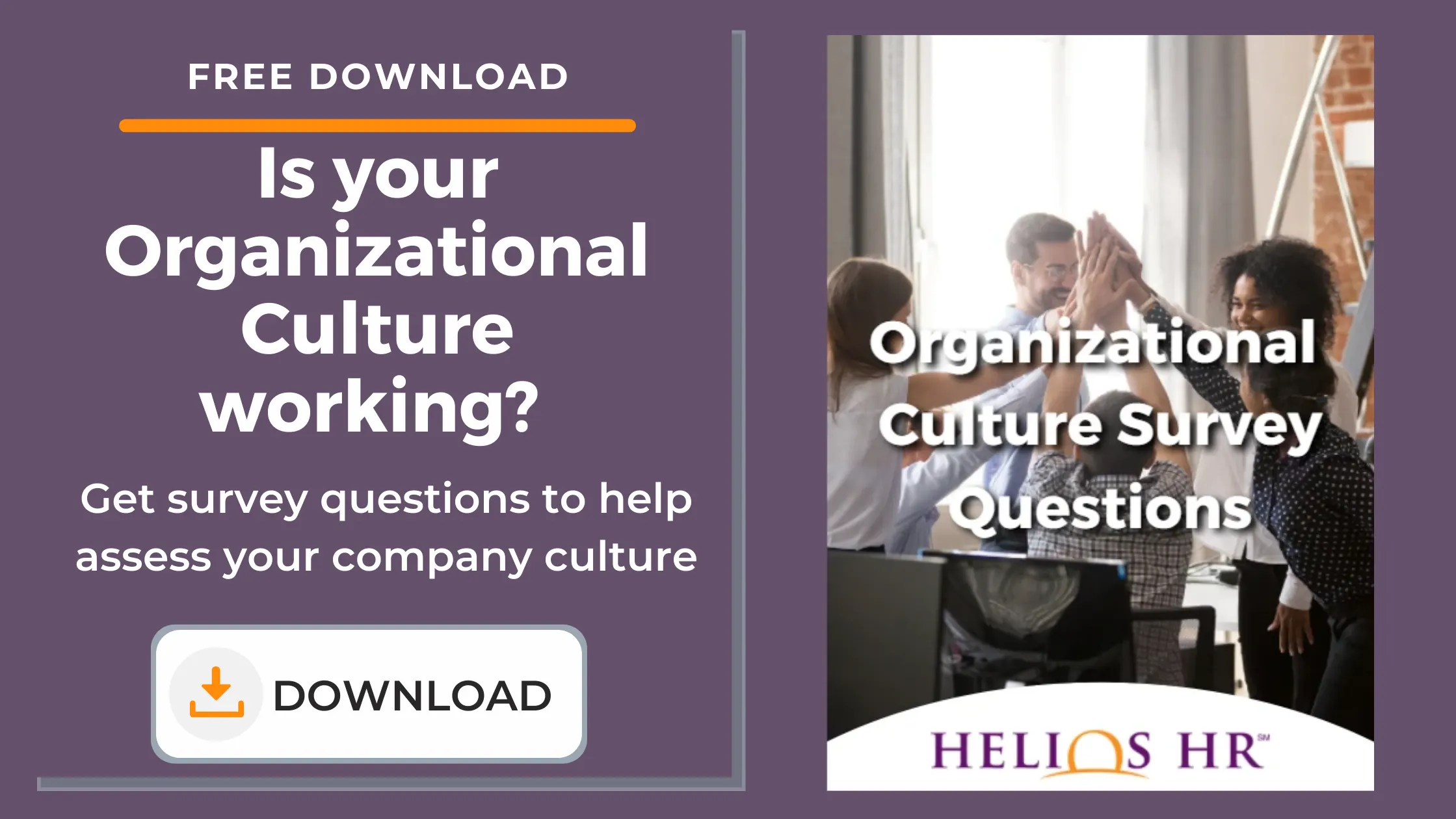By: Helios on September 16th, 2021
Where Does Your Team Fit in These 8 Types of Organizational Culture?
When you’re competing for talent in the recruitment market, it doesn’t always come down to salary. Around one in four candidates say that they’ll choose the employer with the best organizational culture, even if it means turning down more lucrative offers. That’s why it’s so important to celebrate your culture and share it with the outside world.
But organizational culture can be hard to describe to outsiders. A team is like a family, with unique quirks and dynamics that aren't easy to put into words. A systematic cultural analysis can make it easier to articulate your culture, and to identify the strengths and weaknesses of your team dynamics.
Understanding the elements of organizational culture
The problem with describing culture is that there are so many factors to consider. Some models of culture analysis look at seven elements of workplace cultures, which are:
- Financial stability
- Interpersonal relationships
- Performance and management
- Renewal and change
- Internal communities
- External partnerships
- Community impact
While all of these elements are essential, there is a more straightforward model that looks at just two factors:
- People interactions: Are your people independent, or is it a highly collaborative environment?
- Response to change: Does your team prioritize being stable, or is there freedom to be flexible?
Another way of looking at it is to say that culture is about how people react to internal and external events. Once you understand these two factors, you have an effective way to map out your organizational culture.
8 common types of organizational culture
This model was proposed by a group of business administration researchers and first published in Harvard Business Review in 2018. Using this model, they defined eight main company culture types:
Stable and independent
Results culture: A results culture is focused on outcomes. Employees are encouraged to pursue their targets in whatever way they see fit, as long as they meet or exceed expectations.
Results culture works best when leaders strive to create a meritocracy. This means ensuring that everyone has equal access to opportunities and that there’s consistency in the way the company assesses outcomes.
Hierarchy culture: These organizations have a strong hierarchy, often headed by a leadership with strong confidence in their vision. Leaders make bold, unilateral decisions, which is something they can do because they know that their team will always follow them.
Hierarchical culture works best when there is clear communication across the chain of command. Employees in this culture have to work hard to meet the leadership’s high expectations. It’s easier to succeed in this environment when you have complete clarity about what you’re supposed to do.
Flexible and independent
Learning culture: Learning cultures are all about curiosity and innovation. People in this environment like to pitch new ideas, develop fresh skills, and tinker on passion projects. It’s a great culture for companies that need to innovate constantly, such as start-ups and tech companies.
People thrive in a learning culture when they have the right support. That includes practical support, such as access to training and resources. It also means emotional support, especially when a project fails. In a learning culture, each failure is just a step towards the next breakthrough.
Enjoyment culture: Does your team feel more like a family? Then you are working in an enjoyment culture. People in this environment are spontaneous, creative, and feel inspired by their colleagues. They pursue projects that excite them, which can lead to new opportunities and surprising innovations.
Enjoyment cultures work best when people are given the freedom to mingle with colleagues and form groups or clans. A flat management structure works best in this dynamic, with senior leaders having an open-door policy for team members who want to pitch their next big idea.
Stable and collaborative
Safety culture: Safety cultures are essential in highly regulated environments where compliance issues can lead to disaster. The priority here is getting things right first time, every time. In a successful safety culture, everyone in the team understands the rules and knows how to apply them.
Great safety cultures focus on providing employees with the knowledge and tools they need to succeed. There’s a strong emphasis on training and knowledge sharing. People feel empowered to act if they have a concern, and management always acts on such concerns.
Order culture: Orderly cultures are driven by norms and customs. People work together to help each other stick to the agreed order, and they may often quality check each other’s work. Teams follow tried-and-true rules to ensure that they deliver quality results every time.
These cultures, which can often be found in places like schools and government bodies, are under pressure to provide consistent results. Great managers will support this goal by working hard to promote cooperation between people and teams. When everyone is on the same page, the order culture can be one of the most reliable.
Flexible and collaborative
Purpose culture: Purpose-driven cultures are the most outward-looking. They share a deep desire to serve their community, or even to change the world. Team members are highly motivated and idealistic, and the workplace is a compassionate place.
Leaders can support this culture by helping the team stay focused on achievable goals. Purpose-driven organizations give their people some leeway to seek creative solutions to urgent problems, but ultimately it must all tie into the company’s mission.
Caring culture: A culture of caring is all about meaningful interpersonal relationships. Everyone feels a connection to the people around them, and they feel a deep sense of loyalty to the organization. This culture spills out into client relationships, who often value the warmth, kindness and commitment to customer service found inof such organizations.
Caring cultures thrive on open communication. Leaders will often be deeply empathetic, and people will always feel that they can speak freely. This kind of communication allows people to resolve conflict and deepen their connections with colleagues
What’s your type of culture?
Your organizational culture probably doesn’t fit neatly into one of the eight categories above. And that’s fine – each culture is unique, which is what makes each organization so special. Larger teams may have subcultures that each follow their own rules.
Think of these as jumping-off points for a deeper cultural assessment. The more you know about your culture, the easier it becomes to express that culture to other people, including job candidates.





